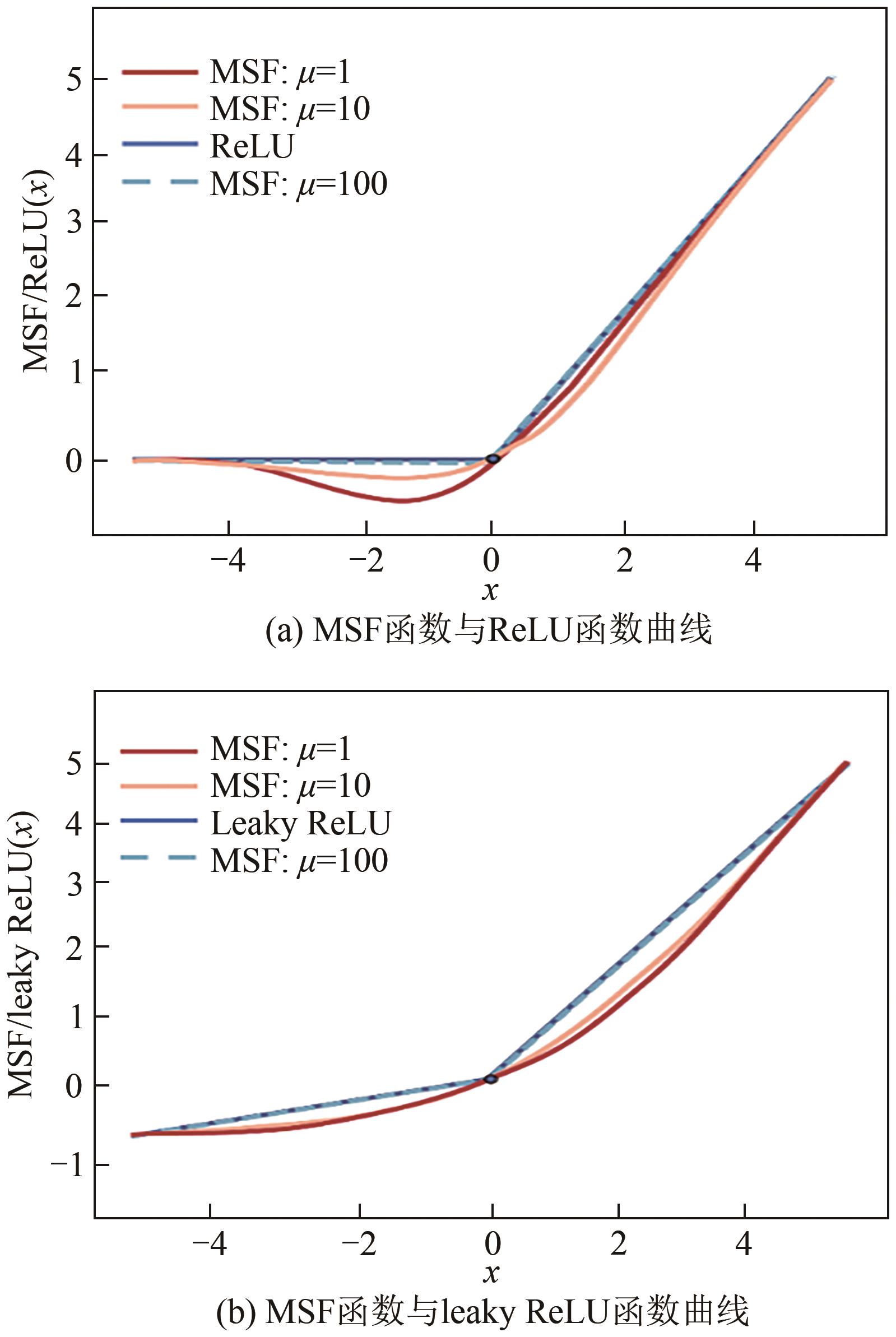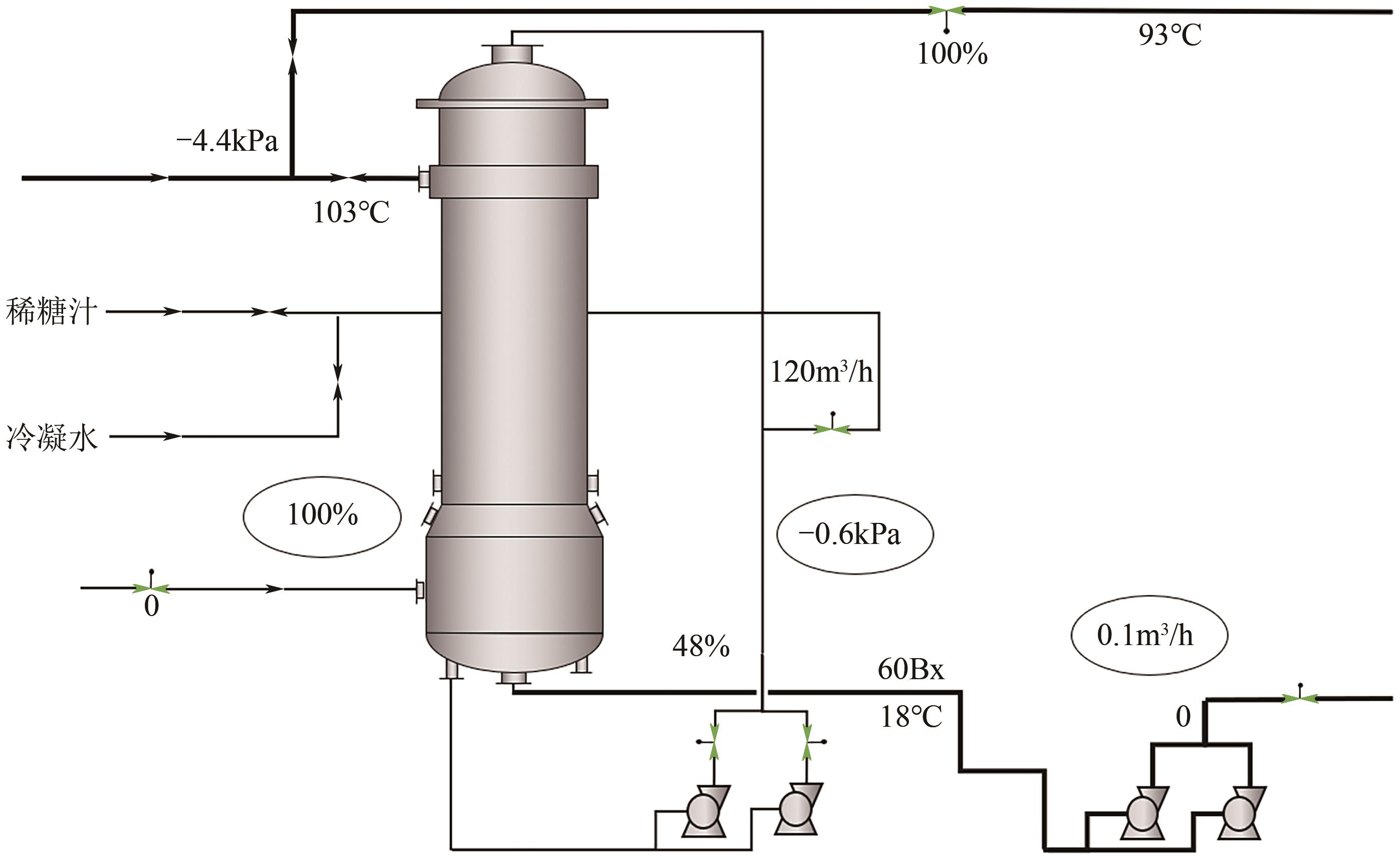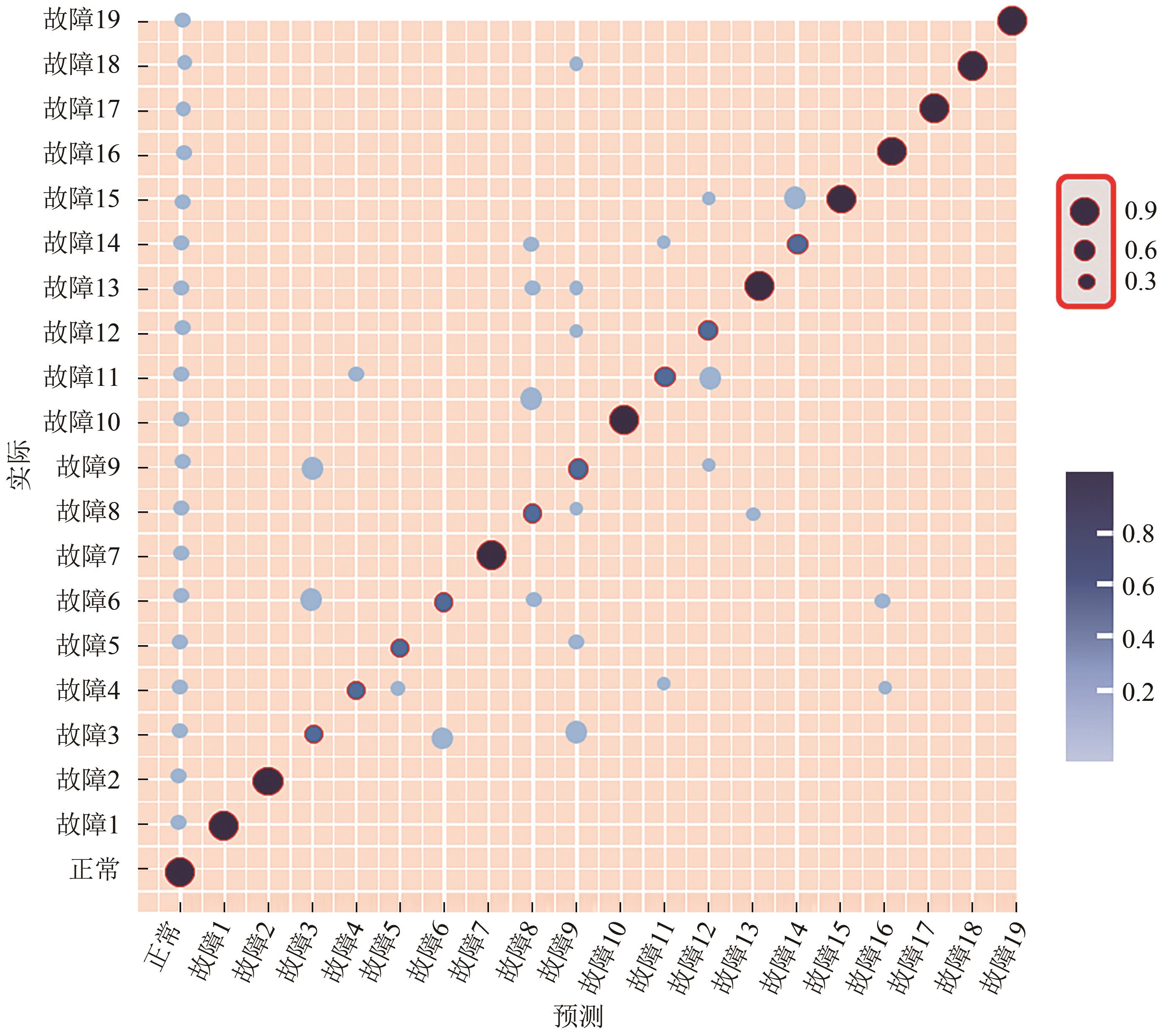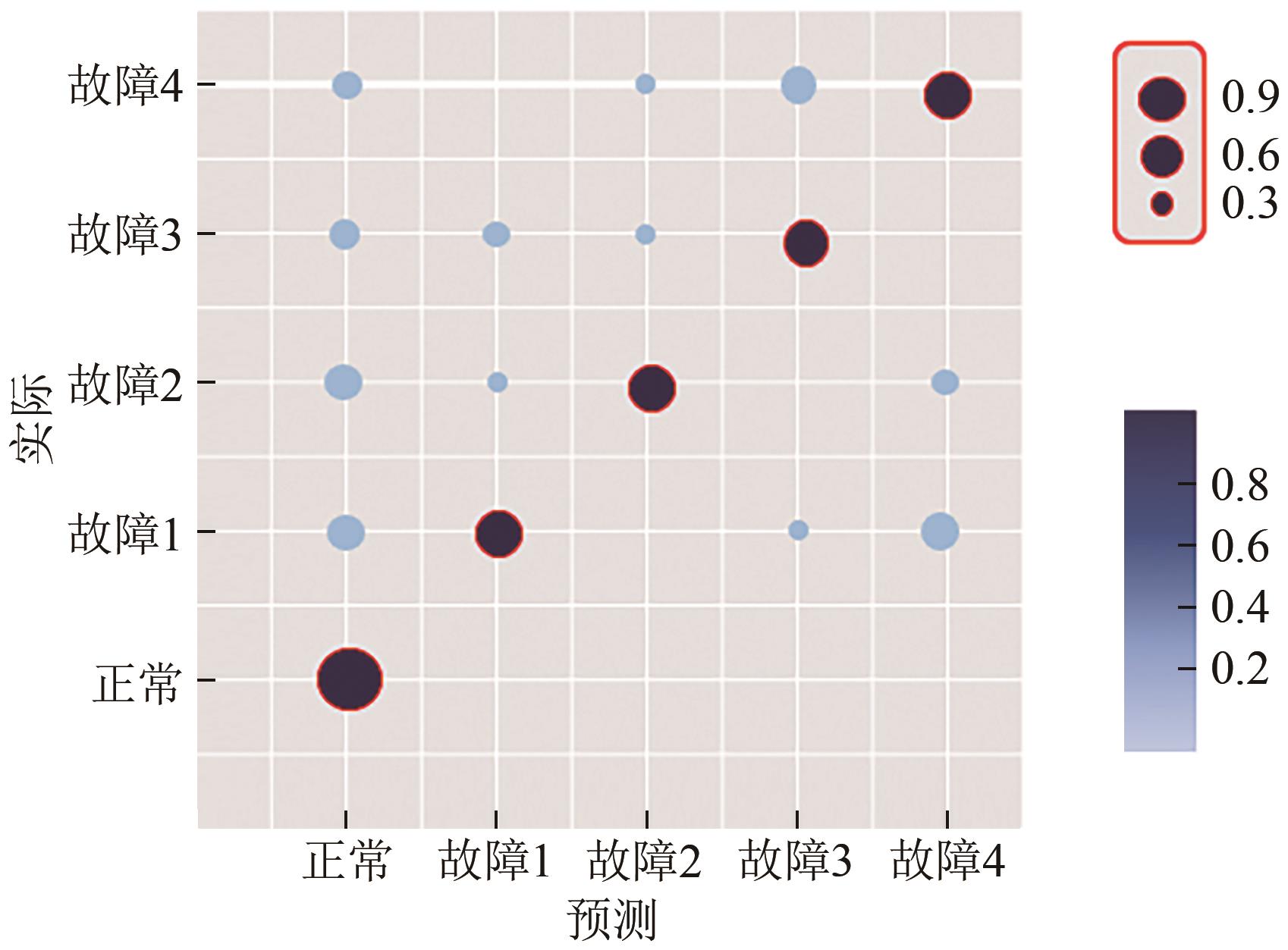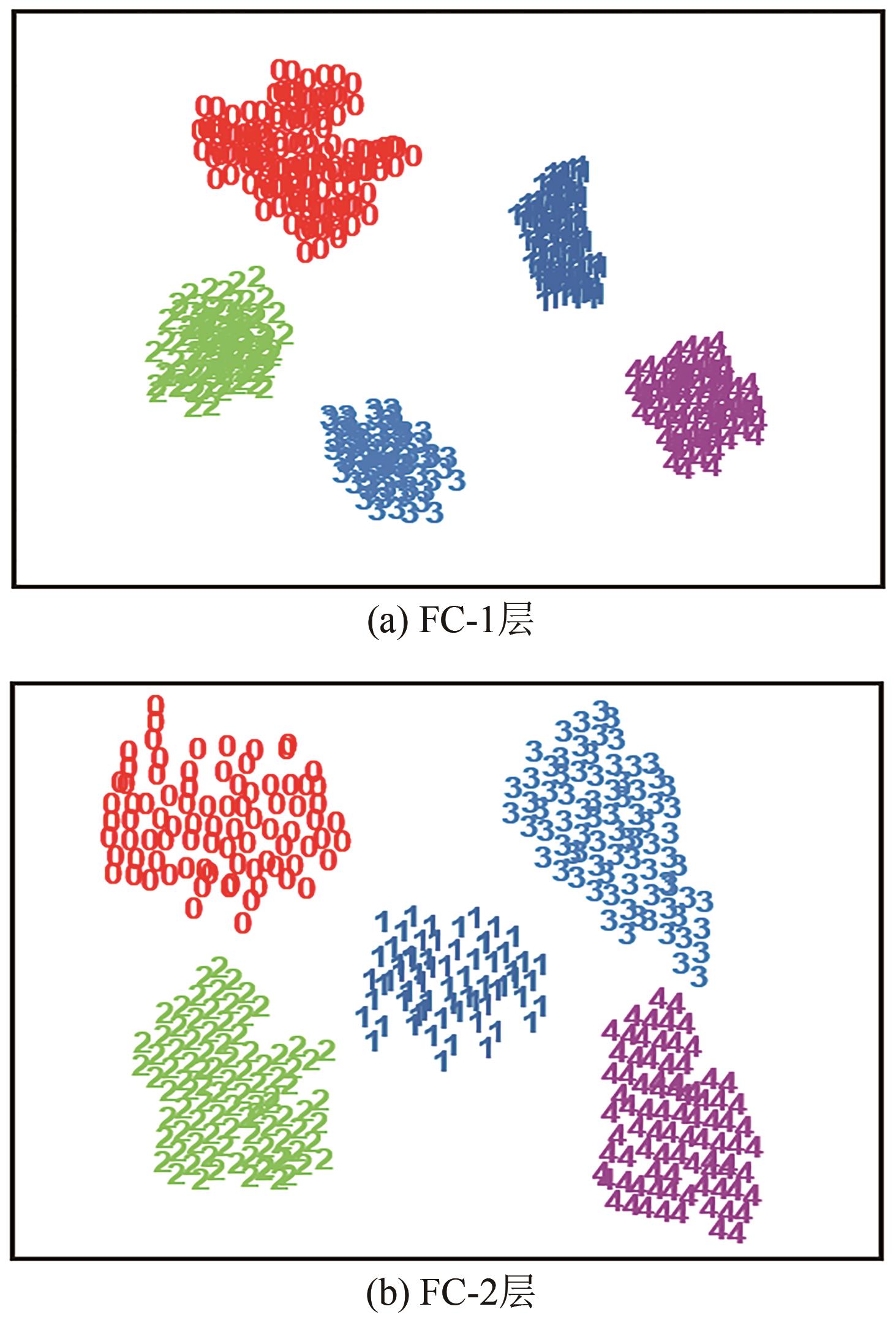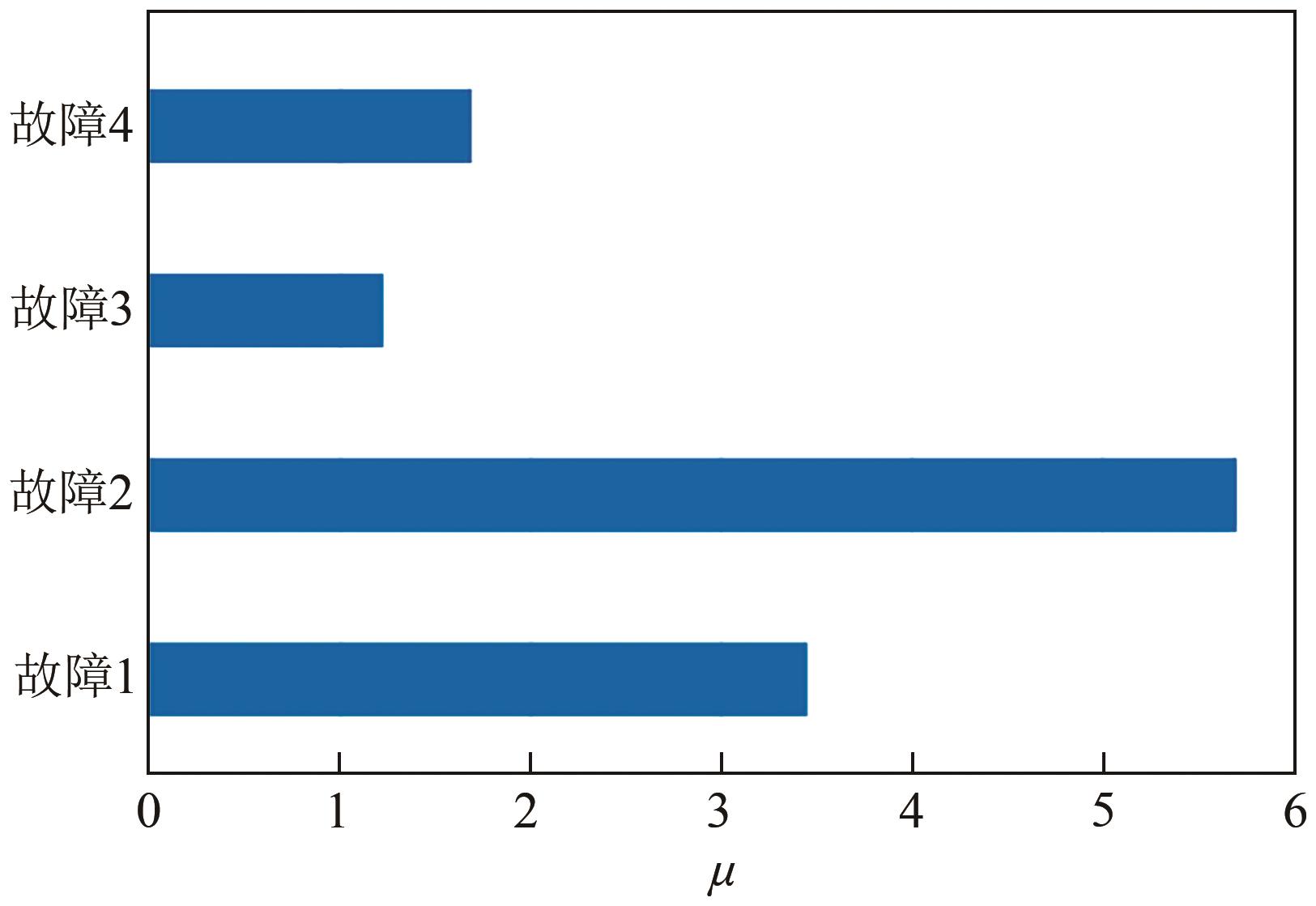Chemical Industry and Engineering Progress ›› 2024, Vol. 43 ›› Issue (9): 4833-4844.DOI: 10.16085/j.issn.1000-6613.2023-1283
• Chemical processes and equipment • Previous Articles
Design and application of enhanced deep convolutional neural networks model for fault diagnosis in practical chemical processes
ZHANG Jiaxin1( ), ZHANG Miao2, DAI Yiyang3, DONG Lichun1(
), ZHANG Miao2, DAI Yiyang3, DONG Lichun1( )
)
- 1.School of Chemistry and Chemical Engineering, Chongqing University, Chongqing 400044, China
2.School of Materials Science and Engineering, Xiangtan University, Xiangtan 411105, Hunan, China
3.School of Chemical Engineering, Sichuan University, Chengdu 600065, Sichuan, China
-
Received:2023-07-25Revised:2023-10-05Online:2024-09-30Published:2024-09-15 -
Contact:DONG Lichun
面向实际化工过程故障诊断的强化深度卷积神经网络模型构建与应用
- 1.重庆大学化学化工学院,重庆 400044
2.湘潭大学材料科学与工程学院,湘潭 湖南 411105
3.四川大学化学工程学院,成都 四川 600065
-
通讯作者:董立春 -
作者简介:张佳鑫(1995—),男,博士研究生,研究方向为过程系统工程。E-mail:zhangjx@cqu.edu.cn。 -
基金资助:国家自然科学基金面上项目(22108019)
CLC Number:
Cite this article
ZHANG Jiaxin, ZHANG Miao, DAI Yiyang, DONG Lichun. Design and application of enhanced deep convolutional neural networks model for fault diagnosis in practical chemical processes[J]. Chemical Industry and Engineering Progress, 2024, 43(9): 4833-4844.
张佳鑫, 张淼, 戴一阳, 董立春. 面向实际化工过程故障诊断的强化深度卷积神经网络模型构建与应用[J]. 化工进展, 2024, 43(9): 4833-4844.
share this article
Add to citation manager EndNote|Ris|BibTeX
URL: https://hgjz.cip.com.cn/EN/10.16085/j.issn.1000-6613.2023-1283
| 编号 | 符号 | 描述 | 范围阈值 | 单位 |
|---|---|---|---|---|
| 1 | P57-03 | P1-果汁压力(阀门入口) | 0~1000 | kPa |
| 2 | P57-04 | P2-果汁压力(阀门出口) | 0~1000 | kPa |
| 3 | T57-03 | T-果汁温度(阀门入口) | 0~150 | ℃ |
| 4 | FC57-03PV | PV-过程值(果汁流量, 第2个蒸发器出口) | 0~100 | m3/h |
| 5 | FC57-03CV | CV-控制值(控制器输出) | 0~1002 | — |
| 6 | FC57-03X | X-伺服电机杆位移 | 0~1002 | — |
| 编号 | 符号 | 描述 | 范围阈值 | 单位 |
|---|---|---|---|---|
| 1 | P57-03 | P1-果汁压力(阀门入口) | 0~1000 | kPa |
| 2 | P57-04 | P2-果汁压力(阀门出口) | 0~1000 | kPa |
| 3 | T57-03 | T-果汁温度(阀门入口) | 0~150 | ℃ |
| 4 | FC57-03PV | PV-过程值(果汁流量, 第2个蒸发器出口) | 0~100 | m3/h |
| 5 | FC57-03CV | CV-控制值(控制器输出) | 0~1002 | — |
| 6 | FC57-03X | X-伺服电机杆位移 | 0~1002 | — |
| 故障编号 | 描述 | 类型 |
|---|---|---|
| 1 | 阀门堵塞 | 控制阀故障 |
| 2 | 阀塞或阀座沉淀 | |
| 3 | 阀塞或阀座腐蚀 | |
| 4 | 阀门或衬套摩擦力增加 | |
| 5 | 外部漏电(套管、盖子、端子漏电) | |
| 6 | 内部泄漏(阀门密封性) | |
| 7 | 介质蒸发或临界流量 | |
| 8 | 扭转伺服电机的活塞杆 | 伺服电机故障 |
| 9 | 伺服电机外壳或端子的密封性 | |
| 10 | 伺服电机隔膜穿孔 | |
| 11 | 伺服电机弹簧故障 | |
| 12 | 电空转换器故障 | 定位器故障 |
| 13 | 杆位移传感器故障 | |
| 14 | 压力传感器故障 | |
| 15 | 定位器反馈故障 | |
| 16 | 定位器供给压降 | 一般故障/外部故障 |
| 17 | 阀门上出现意外的压力变化 | |
| 18 | 旁通阀完全或部分打开 | |
| 19 | 流量传感器故障 |
| 故障编号 | 描述 | 类型 |
|---|---|---|
| 1 | 阀门堵塞 | 控制阀故障 |
| 2 | 阀塞或阀座沉淀 | |
| 3 | 阀塞或阀座腐蚀 | |
| 4 | 阀门或衬套摩擦力增加 | |
| 5 | 外部漏电(套管、盖子、端子漏电) | |
| 6 | 内部泄漏(阀门密封性) | |
| 7 | 介质蒸发或临界流量 | |
| 8 | 扭转伺服电机的活塞杆 | 伺服电机故障 |
| 9 | 伺服电机外壳或端子的密封性 | |
| 10 | 伺服电机隔膜穿孔 | |
| 11 | 伺服电机弹簧故障 | |
| 12 | 电空转换器故障 | 定位器故障 |
| 13 | 杆位移传感器故障 | |
| 14 | 压力传感器故障 | |
| 15 | 定位器反馈故障 | |
| 16 | 定位器供给压降 | 一般故障/外部故障 |
| 17 | 阀门上出现意外的压力变化 | |
| 18 | 旁通阀完全或部分打开 | |
| 19 | 流量传感器故障 |
| 项目 | 预测 | ||
|---|---|---|---|
| 阳性(P) | 阴性(N) | ||
| 实际 | 真(T) | TP | TN |
| 假(F) | FP | FN | |
| 项目 | 预测 | ||
|---|---|---|---|
| 阳性(P) | 阴性(N) | ||
| 实际 | 真(T) | TP | TN |
| 假(F) | FP | FN | |
| 故障 | DCNN (ReLU)/% | DCNN (leaky ReLU)/% | DCNN (GELU)/% | EDCNN(MSF)/% | ||||
|---|---|---|---|---|---|---|---|---|
| FDR | FPR | FDR | FPR | FDR | FPR | FDR | FPR | |
| 1 | 56.50 | 19.10 | 73.62 | 10.22 | 95.00 | 1.64 | 99.91 | 0.01 |
| 2 | 65.75 | 13.38 | 72.25 | 8.88 | 92.45 | 2.45 | 99.98 | 0 |
| 7 | 68.88 | 10.76 | 80.25 | 8.16 | 97.00 | 8.01 | 99.95 | 0.18 |
| 10 | 81.13 | 11.55 | 86.37 | 7.46 | 94.00 | 3.81 | 100.00 | 0.01 |
| 13 | 47.38 | 6.45 | 85.04 | 5.93 | 93.00 | 2.00 | 100.00 | 0.13 |
| 15 | 71.50 | 17.79 | 88.10 | 12.14 | 100.00 | 1.03 | 100.00 | 0.05 |
| 16 | 69.25 | 17.10 | 80.04 | 8.93 | 90.63 | 2.22 | 99.50 | 0.11 |
| 17 | 67.85 | 15.40 | 78.13 | 10.81 | 91.25 | 3.12 | 100.00 | 0.12 |
| 18 | 73.25 | 4.25 | 86.87 | 3.71 | 100.00 | 8.92 | 100.00 | 0.01 |
| 19 | 71.00 | 9.65 | 88.25 | 7.26 | 89.00 | 6.11 | 99.92 | 0.02 |
| 平均值 | 67.25 | 12.54 | 81.89 | 8.35 | 93.23 | 3.93 | 99.93 | 0.06 |
| 故障 | DCNN (ReLU)/% | DCNN (leaky ReLU)/% | DCNN (GELU)/% | EDCNN(MSF)/% | ||||
|---|---|---|---|---|---|---|---|---|
| FDR | FPR | FDR | FPR | FDR | FPR | FDR | FPR | |
| 1 | 56.50 | 19.10 | 73.62 | 10.22 | 95.00 | 1.64 | 99.91 | 0.01 |
| 2 | 65.75 | 13.38 | 72.25 | 8.88 | 92.45 | 2.45 | 99.98 | 0 |
| 7 | 68.88 | 10.76 | 80.25 | 8.16 | 97.00 | 8.01 | 99.95 | 0.18 |
| 10 | 81.13 | 11.55 | 86.37 | 7.46 | 94.00 | 3.81 | 100.00 | 0.01 |
| 13 | 47.38 | 6.45 | 85.04 | 5.93 | 93.00 | 2.00 | 100.00 | 0.13 |
| 15 | 71.50 | 17.79 | 88.10 | 12.14 | 100.00 | 1.03 | 100.00 | 0.05 |
| 16 | 69.25 | 17.10 | 80.04 | 8.93 | 90.63 | 2.22 | 99.50 | 0.11 |
| 17 | 67.85 | 15.40 | 78.13 | 10.81 | 91.25 | 3.12 | 100.00 | 0.12 |
| 18 | 73.25 | 4.25 | 86.87 | 3.71 | 100.00 | 8.92 | 100.00 | 0.01 |
| 19 | 71.00 | 9.65 | 88.25 | 7.26 | 89.00 | 6.11 | 99.92 | 0.02 |
| 平均值 | 67.25 | 12.54 | 81.89 | 8.35 | 93.23 | 3.93 | 99.93 | 0.06 |
| 故障 | DBN/% | ALW-DBN/% | EDCNN/% | |||
|---|---|---|---|---|---|---|
| FDR | FPR | FDR | FPR | FDR | FPR | |
| 1 | 71.50 | 8.03 | 97.21 | 0.14 | 99.94 | 0.01 |
| 2 | 68.35 | 9.06 | 98.55 | 0.01 | 99.99 | 0.01 |
| 7 | 73.50 | 7.57 | 96.18 | 0.04 | 99.96 | 0.02 |
| 10 | 70.52 | 13.29 | 89.62 | 0.39 | 100.00 | 0.01 |
| 13 | 63.38 | 3.47 | 96.16 | 0 | 100.00 | 0.03 |
| 15 | 69.13 | 5.76 | 98.29 | 0 | 100.00 | 0.05 |
| 16 | 72.90 | 13.75 | 94.29 | 0.10 | 99.70 | 0.01 |
| 17 | 73.00 | 16.69 | 95.44 | 0 | 100.00 | 0.02 |
| 18 | 66.60 | 9.37 | 97.11 | 0.03 | 100.00 | 0 |
| 19 | 75.18 | 14.53 | 97.31 | 0.16 | 99.91 | 0.02 |
| 平均值 | 70.41 | 10.15 | 96.02 | 0.087 | 99.95 | 0.018 |
| 故障 | DBN/% | ALW-DBN/% | EDCNN/% | |||
|---|---|---|---|---|---|---|
| FDR | FPR | FDR | FPR | FDR | FPR | |
| 1 | 71.50 | 8.03 | 97.21 | 0.14 | 99.94 | 0.01 |
| 2 | 68.35 | 9.06 | 98.55 | 0.01 | 99.99 | 0.01 |
| 7 | 73.50 | 7.57 | 96.18 | 0.04 | 99.96 | 0.02 |
| 10 | 70.52 | 13.29 | 89.62 | 0.39 | 100.00 | 0.01 |
| 13 | 63.38 | 3.47 | 96.16 | 0 | 100.00 | 0.03 |
| 15 | 69.13 | 5.76 | 98.29 | 0 | 100.00 | 0.05 |
| 16 | 72.90 | 13.75 | 94.29 | 0.10 | 99.70 | 0.01 |
| 17 | 73.00 | 16.69 | 95.44 | 0 | 100.00 | 0.02 |
| 18 | 66.60 | 9.37 | 97.11 | 0.03 | 100.00 | 0 |
| 19 | 75.18 | 14.53 | 97.31 | 0.16 | 99.91 | 0.02 |
| 平均值 | 70.41 | 10.15 | 96.02 | 0.087 | 99.95 | 0.018 |
| 故障 | 描述 |
|---|---|
| 1 | E-100中CWS温度由20℃升至30℃ |
| 2 | 吸收剂进料成分:MDEA∶水=0.08∶0.9055 |
| 3 | 天然气原料摩尔流量异常,变为7000kmol/h |
| 4 | 吸收塔富胺液阀门开度增加10% (主要是将液位控制调整为手动,开度增加10%) |
| 故障 | 描述 |
|---|---|
| 1 | E-100中CWS温度由20℃升至30℃ |
| 2 | 吸收剂进料成分:MDEA∶水=0.08∶0.9055 |
| 3 | 天然气原料摩尔流量异常,变为7000kmol/h |
| 4 | 吸收塔富胺液阀门开度增加10% (主要是将液位控制调整为手动,开度增加10%) |
| 故障 | FDR/% | FPR/% | ||
|---|---|---|---|---|
| 训练集 | 测试集 | 训练集 | 测试集 | |
| 1 | 99.97 | 99.85 | 0.006 | 0.010 |
| 2 | 99.90 | 99.94 | 0.004 | 0.012 |
| 3 | 99.97 | 99.70 | 0.003 | 0.058 |
| 4 | 99.91 | 99.50 | 0.012 | 0.049 |
| 平均值 | 99.94 | 99.75 | 0.006 | 0.032 |
| 故障 | FDR/% | FPR/% | ||
|---|---|---|---|---|
| 训练集 | 测试集 | 训练集 | 测试集 | |
| 1 | 99.97 | 99.85 | 0.006 | 0.010 |
| 2 | 99.90 | 99.94 | 0.004 | 0.012 |
| 3 | 99.97 | 99.70 | 0.003 | 0.058 |
| 4 | 99.91 | 99.50 | 0.012 | 0.049 |
| 平均值 | 99.94 | 99.75 | 0.006 | 0.032 |
| 时间间隔/min | 平均FDR/% |
|---|---|
| 1~2 | 0.792 |
| 2~3 | 0.976 |
| 3~4 | 0.997 |
| 4~5 | 0.997 |
| 5~6 | 0.994 |
| 6~7 | 0.996 |
| 7~8 | 0.997 |
| 8~9 | 0.997 |
| 9~10 | 0.997 |
| 时间间隔/min | 平均FDR/% |
|---|---|
| 1~2 | 0.792 |
| 2~3 | 0.976 |
| 3~4 | 0.997 |
| 4~5 | 0.997 |
| 5~6 | 0.994 |
| 6~7 | 0.996 |
| 7~8 | 0.997 |
| 8~9 | 0.997 |
| 9~10 | 0.997 |
| 故障 | DBN/% | ALW-DBN/% | CNN/% | DCNN/% | EDCNN/% | |||||
|---|---|---|---|---|---|---|---|---|---|---|
| FDR | FPR | FDR | FPR | FDR | FPR | FDR | FPR | FDR | FPR | |
| 1 | 66.60 | 4.82 | 89.60 | 1.22 | 69.75 | 7.45 | 81.45 | 1.04 | 99.85 | 0.010 |
| 2 | 78.60 | 2.48 | 95.50 | 0.44 | 65.10 | 6.18 | 88.20 | 1.28 | 99.94 | 0.012 |
| 3 | 98.40 | 0.60 | 99.60 | 0.09 | 88.25 | 2.20 | 90.50 | 0.99 | 99.70 | 0.058 |
| 4 | 64.80 | 4.02 | 90.80 | 0.40 | 78.90 | 1.82 | 80.70 | 1.50 | 99.50 | 0.049 |
| 平均值 | 77.10 | 2.98 | 93.88 | 0.54 | 75.50 | 4.41 | 85.21 | 1.20 | 99.75 | 0.032 |
| 故障 | DBN/% | ALW-DBN/% | CNN/% | DCNN/% | EDCNN/% | |||||
|---|---|---|---|---|---|---|---|---|---|---|
| FDR | FPR | FDR | FPR | FDR | FPR | FDR | FPR | FDR | FPR | |
| 1 | 66.60 | 4.82 | 89.60 | 1.22 | 69.75 | 7.45 | 81.45 | 1.04 | 99.85 | 0.010 |
| 2 | 78.60 | 2.48 | 95.50 | 0.44 | 65.10 | 6.18 | 88.20 | 1.28 | 99.94 | 0.012 |
| 3 | 98.40 | 0.60 | 99.60 | 0.09 | 88.25 | 2.20 | 90.50 | 0.99 | 99.70 | 0.058 |
| 4 | 64.80 | 4.02 | 90.80 | 0.40 | 78.90 | 1.82 | 80.70 | 1.50 | 99.50 | 0.049 |
| 平均值 | 77.10 | 2.98 | 93.88 | 0.54 | 75.50 | 4.41 | 85.21 | 1.20 | 99.75 | 0.032 |
| 故障 | CNN(MSF)/% | DCNN(MSF)/% | EDCNN(MSF)/% | |||
|---|---|---|---|---|---|---|
| FDR | FPR | FDR | FPR | FDR | FPR | |
| 1 | 76.31 | 4.90 | 87.76 | 0.90 | 99.85 | 0.010 |
| 2 | 79.15 | 3.00 | 85.38 | 0.32 | 99.94 | 0.012 |
| 3 | 87.12 | 2.10 | 90.50 | 0.42 | 99.70 | 0.058 |
| 4 | 86.12 | 2.60 | 91.20 | 1.01 | 99.50 | 0.049 |
| 平均 | 82.18 | 3.15 | 88.71 | 0.66 | 99.75 | 0.032 |
| 故障 | CNN(MSF)/% | DCNN(MSF)/% | EDCNN(MSF)/% | |||
|---|---|---|---|---|---|---|
| FDR | FPR | FDR | FPR | FDR | FPR | |
| 1 | 76.31 | 4.90 | 87.76 | 0.90 | 99.85 | 0.010 |
| 2 | 79.15 | 3.00 | 85.38 | 0.32 | 99.94 | 0.012 |
| 3 | 87.12 | 2.10 | 90.50 | 0.42 | 99.70 | 0.058 |
| 4 | 86.12 | 2.60 | 91.20 | 1.01 | 99.50 | 0.049 |
| 平均 | 82.18 | 3.15 | 88.71 | 0.66 | 99.75 | 0.032 |
| 1 | ZHU Zhiqin, LEI Yangbo, QI Guanqiu, et al. A review of the application of deep learning in intelligent fault diagnosis of rotating machinery[J]. Measurement, 2023, 206: 112346. |
| 2 | 李国友, 张新魁, 才士文, 等. 基于改进KFDA与DE优化SOM的故障诊断模型及其化工过程诊断[J]. 化工进展, 2022, 41(4): 1793-1801. |
| LI Guoyou, ZHANG Xinkui, CAI Shiwen, et al. Study on fault diagnosis model and chemical process fault diagnosis based on improved KFDA and DE optimized SOM[J]. Chemical Industry and Engineering Progress, 2022, 41(4): 1793-1801. | |
| 3 | 宋冰, 郑城风, 侍洪波, 等. 基于VAE-OCCA的质量相关故障检测方法研究[J]. 化工学报, 2023, 74(4): 1630-1638. |
| SONG Bing, ZHENG Chengfeng, SHI Hongbo, et al. Research on quality-related fault detection method based on VAE-OCCA[J]. CIESC Journal, 2023, 74(4): 1630-1638. | |
| 4 | 姚羽曼, 罗文嘉, 戴一阳. 数据驱动方法在化工过程故障诊断中的研究进展[J]. 化工进展, 2021, 40(4): 1755-1764. |
| YAO Yuman, LUO Wenjia, DAI Yiyang. Research progress of data-driven methods in fault diagnosis of chemical process[J]. Chemical Industry and Engineering Progress, 2021, 40(4): 1755-1764. | |
| 5 | 张焕, 张庆, 于纪言. 卷积神经网络中激活函数的性质分析与改进[J]. 计算机仿真, 2022, 39(4): 328-334. |
| ZHANG Huan, ZHANG Qing, YU Jiyan. Analysis and improvement of properties of activation functions in convolutional neural networks[J]. Computer Simulation, 2022, 39(4): 328-334. | |
| 6 | 谢星怡, 张正江, 闫正兵, 等. 基于信号特征提取和卷积神经网络的轴承故障诊断研究[J]. 计算机测量与控制, 2023, 31(10): 21-27. |
| XIE Xingyi, ZHANG Zhengjiang, YAN Zhengbing, et al. Research on bearing fault diagnosis based on signal feature extraction and convolutional neural network[J]. Computer Measurement & Control, 2023, 31(10): 21-27. | |
| 7 | WEN Long, LI Xinyu, GAO Liang, et al. A new convolutional neural network-based data-driven fault diagnosis method[J]. IEEE Transactions on Industrial Electronics, 2018, 65(7): 5990-5998. |
| 8 | JIANG Guoqian, WANG Jing, WANG Lijin, et al. An interpretable convolutional neural network with multi-wavelet kernel fusion for intelligent fault diagnosis[J]. Journal of Manufacturing Systems, 2023, 70: 18-30. |
| 9 | 周中, 闫龙宾, 张俊杰, 等. 基于自注意力机制与卷积神经网络的隧道衬砌裂缝智能检测[J/OL]. 铁道学报, 2023, . |
| ZHOU Zhong, YAN Longbin, ZHANG Junjie, et al. Intelligent detection of tunnel lining cracks based on self-attention mechanism and convolutional neural network[J/OL]. Journal of the China Railway Society, 2023, . | |
| 10 | 尹梓诺, 马海龙, 胡涛. 基于联合注意力机制和一维卷积神经网络-双向长短期记忆网络模型的流量异常检测方法[J].电子与信息学报, 2023, 45(10): 3719-3728. |
| YIN Zinuo, MA Hailong, HU Tao. Traffic anomaly detection method based on joint attention mechanism and 1-dimensional convolutional neural network-bidirectional long short-term memory network model[J]. Journal of Electronics & Information technology, 2023, 45(10): 3719-3728. | |
| 11 | VINOD Nair, HINTON Geoffrey E. Rectified linear units improve restricted boltzmann machines[C]//Proceedings of the 27th International Conference on International Conference on Machine Learning. Haifa, Israel: ACM, 2010: 807-814. |
| 12 | RAMACHANDRAN Prajit, ZOPH Barret, LE Quoc V. Searching for activation functions[EB/OL]. (2017-10-16). . |
| 13 | GOODFELLOW Ian J, David WARDE-FARLEY, MIRZA Mehdi, et al. Maxout networks[C]//International Conference on Machine Learning. Atlata, USA: PMLR, 2013: 1319-1327. |
| 14 | 陈文华, 黄伟稀. 基于卷积神经网络的海上风电机组齿轮箱故障诊断[J]. 电子设计工程, 2022, 30(21): 6-10. |
| CHEN Wenhua, HUANG Weixi. Fault diagnosis of offshore wind turbine gearbox based on convolutional neural network[J]. Electronic Design Engineering, 2022, 30(21): 6-10. | |
| 15 | DENG Lu, ZHANG Yangxue, DAI Yiyang, et al. Integrating feature optimization using a dynamic convolutional neural network for chemical process supervised fault classification[J]. Process Safety and Environmental Protection, 2021, 155: 473-485. |
| 16 | HENDRYCKS Dan, GIMPEL Kevin. Gaussian error linear units (GELUs)[EB/OL]. (2016-6-27). . |
| 17 | MATTEN L V D, HINTON G. Visualizing data using t-SNE[J]. Journal of Machine Learning Research, 2008, 9 (11): 2579-2605. |
| 18 | ZHANG Zhanpeng, ZHAO Jinsong. A deep belief network based fault diagnosis model for complex chemical processes[J]. Computers & Chemical Engineering, 2017, 107: 395-407. |
| 19 | YAO Yuman, ZHANG Jiaxin, LUO Wenjia, et al. A hybrid intelligent fault diagnosis strategy for chemical processes based on penalty iterative optimization[J]. Processes, 2021, 9(8): 1266. |
| [1] | ZHANG Fengqi, CUI Chengdong, BAO Xuewei, ZHU Weixuan, DONG Hongguang. Design and evaluation of sweetening process with amine solution absorption and multiple desorption [J]. Chemical Industry and Engineering Progress, 2023, 42(S1): 518-528. |
| [2] | YANG Jianping. PSE for feedstock consumption reduction in reaction system of HPPO plant [J]. Chemical Industry and Engineering Progress, 2023, 42(S1): 21-32. |
| [3] | LI Lanyu, HUANG Xinye, WANG Xiaonan, QIU Tong. Reflection and prospects on the intelligent transformation of chemical engineering research [J]. Chemical Industry and Engineering Progress, 2023, 42(7): 3325-3330. |
| [4] | ZHAO Huacong, ZHU Weixuan, YE Haotian, DONG Hongguang. Research on synchronous optimization of steam power system for processing units and thermal power plant operation [J]. Chemical Industry and Engineering Progress, 2022, 41(S1): 44-53. |
| [5] | YANG Youqi, CHEN Bingzhen. PSE in China: retrospect and prospects [J]. Chemical Industry and Engineering Progress, 2022, 41(8): 3991-4008. |
| [6] | LI Guoyou, ZHANG Xinkui, CAI Shiwen, JIA Yaoyu, NING Ze. Study on fault diagnosis model and chemical process fault diagnosis based on improved KFDA and DE optimized SOM [J]. Chemical Industry and Engineering Progress, 2022, 41(4): 1793-1801. |
| [7] | SHAO Guanying, HE Gaohong, JIANG Xiaobin. On-line monitoring and process control of membrane-assisted seeding for ammonium persulfate cooling crystallization [J]. Chemical Industry and Engineering Progress, 2022, 41(12): 6226-6234. |
| [8] | YU Bin, LIU Chunhui, ZHENG Guangqiang, QU Guang, WEI Yongtai, WANG Hongxing. Optimization of control of glycol-water separation by heat-integrated pressure swing distillation [J]. Chemical Industry and Engineering Progress, 2021, 40(S2): 56-63. |
| [9] | CHEN Peizhu, CHEN Guohua, ZHOU Lixing, MEN Jinkun. Intelligent decision system of emergency response based on multi-Agent cooperation in chemical industry park [J]. Chemical Industry and Engineering Progress, 2021, 40(8): 4656-4665. |
| [10] | ZHANG Mengxuan, LIU Hongchen, WANG Min, LAN Xingying, SHI Xiaogang, GAO Jinsen. Intelligence hybrid modeling method and applications in chemical process [J]. Chemical Industry and Engineering Progress, 2021, 40(4): 1765-1776. |
| [11] | WANG Xiaoda, CHEN Yu, WANG Qinglian, HUANG Zhixian, YANG Chen, WANG Hongxing, QIU Ting. Review on etherification by reactive distillation [J]. Chemical Industry and Engineering Progress, 2021, 40(4): 1797-1811. |
| [12] | Hongjie LOU, Xiansong ZHANG, Xingjian JIANG, Qizhong HUANG, Wei LIU, Jianhua HE, Miaomiao ZHOU, Yanjing HU. Sediment analysis system and diagnosis technology based on system engineering method [J]. Chemical Industry and Engineering Progress, 2020, 39(S2): 97-105. |
| [13] | Zhiyun ZOU, Wenchao ZHU, Yingli LIU, Lei MENG, Ning GUO, Meng YU. Discussion on the development trend of small scale special fine chemical process automation and informatization [J]. Chemical Industry and Engineering Progress, 2020, 39(S2): 269-275. |
| [14] | Xu JI, Yagu DANG, Li ZHOU, Yiyang DAI. Interconnected chemical engineering: an intelligent manufacture mode of chemical industry emphasizing the integration of multiscale [J]. Chemical Industry and Engineering Progress, 2020, 39(8): 2927-2937. |
| [15] | Hua ZHANG,Rui YANG,Liming SHAO,Pinjing HE. Progresses in the inhibitors for suppressing de novo formation ofPCDD/Fs: a review [J]. Chemical Industry and Engineering Progress, 2020, 39(4): 1485-1492. |
| Viewed | ||||||
|
Full text |
|
|||||
|
Abstract |
|
|||||

